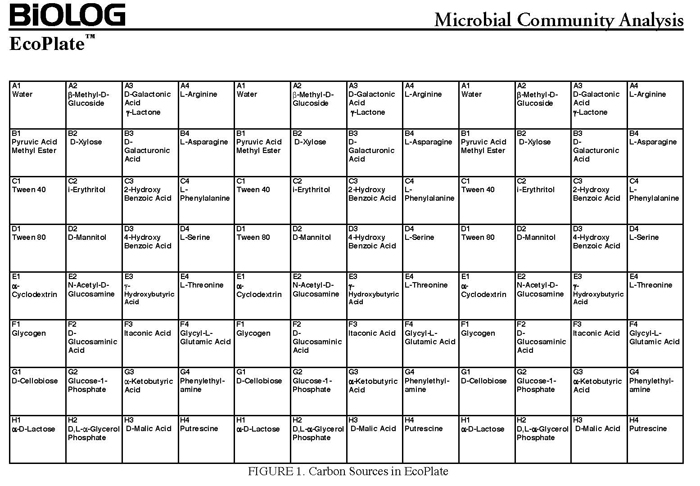31 carbon assays in triplicate Biolog EcoPlates provide a sensitive and reliable index of environmental change. This approach, c

1. BIOLOG TM EcoPlate 20 h after inoculation with interstitial water... | Download Scientific Diagram

Comparison of Biolog AN plates developed at pH 5.5, 6.0, 6.5, 7.0 7.5... | Download Scientific Diagram

Application of Biolog FF MicroPlate for substrate utilization and metabolite profiling of closely related fungi - ScienceDirect
Standardization of Methods for Characterizing the Physiological Profiles of Aquatic Microbial Communities using EcoPlates
Objective: The purpose of this laboratory exercise is to identify an “unknown” bacterium using the Biolog GEN III Microbial
Strain-level diversity of commercial probiotic isolates of Bacillus, Lactobacillus, and Saccharomyces species illustrated by molecular identification and phenotypic profiling | PLOS ONE

Monitoring soil bacteria with community-level physiological profiles using Biolog™ ECO-plates in the Netherlands and Europe - ScienceDirect














